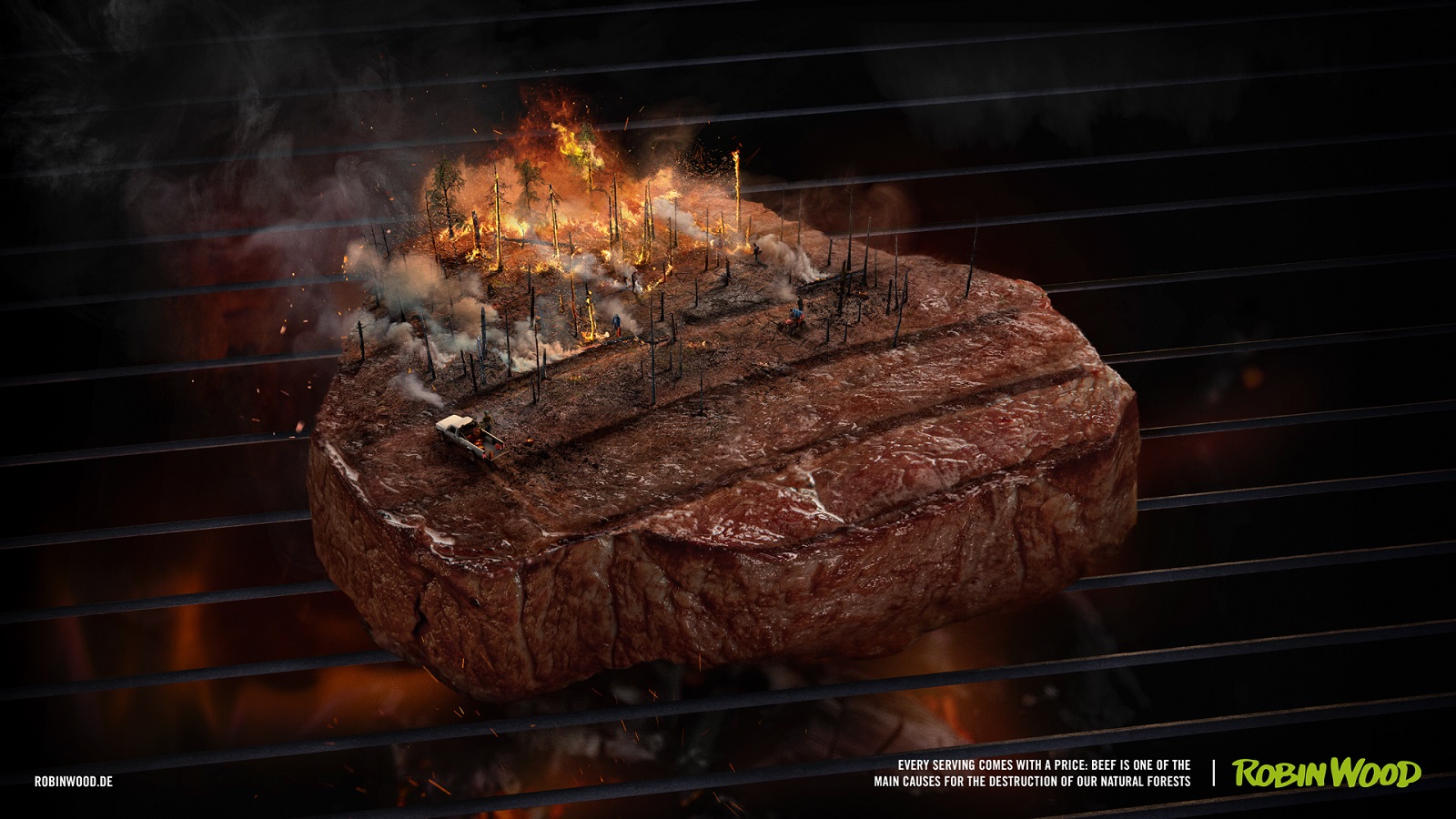There are many things that lead to deforestation. Among these, there are the natural causes comprising of hurricanes, fires, parasites, and floods which, sadly, humanity can’t control. Simply put, this is nature’s way of expressing itself. But the sad thing is, we are doing nothing to stop its effects. On the contrary, our actions are the ones which further fuel global deforestation. According to the World Forestry State report published by FAO, the expansion of agriculture caused nearly 80% of global deforestation. Which leads us to the second cause of deforestation: The anthropic one. Agricultural expansion, cattle breeding, timber extraction, mining, oil extraction, dam construction, and infrastructure development are just some of the things that actually hurt the environment.
But let’s focus on agricultural expansion and cattle breeding. Cutting trees down to make room for different crops is a phenomenon that happens in almost every corner of the world. Still, these kinds of news are kept away from our eyes. Take, for example, the increased production of palm oil. Sure, this brings some big bucks for the companies that lead the process. But there’s a downside: It means the destruction of forests and, in the end, a huge loss for the entire society.
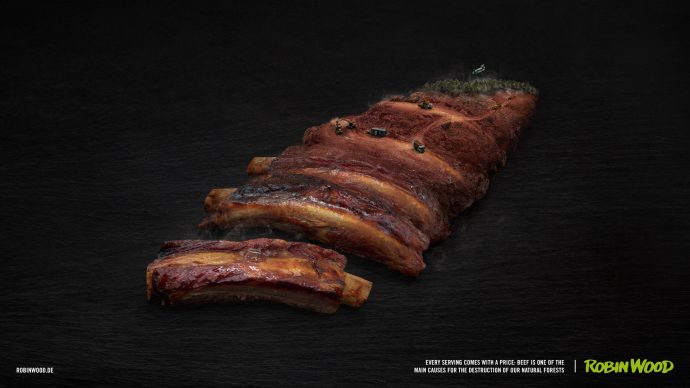
And now, the other issue that’s quite as pressing as the palm oil one: cattle farming. Tropical forests in South America, in particular, are being cleared, mostly illegally, to create new space for cattle farms and soybean plantations. ROBIN WOOD, a “non-violent action group for nature and the environment,” as they call themselves, wants to make things clearer. To help people visualize the devastating effects of deforestation, the NGO joined hands with Serviceplan Campaign X and worked on a series of illustrations that show the true side of cattle farms.
Under the tagline “Every Serving Comes with a Price,” the pictures seem to be made using the same motif: “Hungry for destruction.” Indeed, big companies and farmers are hungry for money, and in their way of making big gains, they don’t pay much attention to what happens to the environment. A study released in September 2019 by the Monitoring of the Andean Amazon Project (MAAP) stated that over 125.000ha of forest were cleared in early 2019 and then burnt at the beginning of the Amazon’s dry season, as landowners claimed new land for agriculture and pasture using the slash-and-burn technique.
Each picture created lies at the intersection between culinary pleasure and destruction. They feature big pieces of meat being grilled, on top of which you can notice some sort of condiments. But at a closer look, you’ll see that these “condiments” are nothing but a clear representation of deforestation: fires and (illegal) loggings are meticulously represented.
Fenna Otten, ROBIN WOOD’s Tropical Forest Advisor, says: “It is very important to us to stop the large-scale deforestation of tropical forests for meat production. We can only achieve this if we make consumers aware of the effects that unchecked meat consumption has on the environment. This is why we have launched a campaign with powerful visual motifs that encourage consumers to rethink their own behavior.”
Markus Maczey, Creative Managing Director of Serviceplan Campaign X adds: “The basic idea of the campaign is to work with detailed and photorealistic illustrations, which at first glance entice with something appetizing, but then, with a delay, reveal their visual drama. This creates a surprise effect and enhances the impact of the motifs. In the course of the picture, what appears to be an enticing piece of meat for consumption, morphs into memorials of the devastating forest destruction.”
So, one question arises: Would you cook this meat, if you knew where it came from?
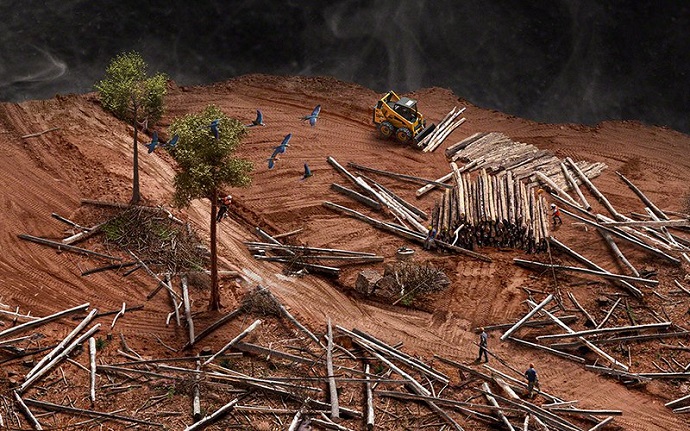
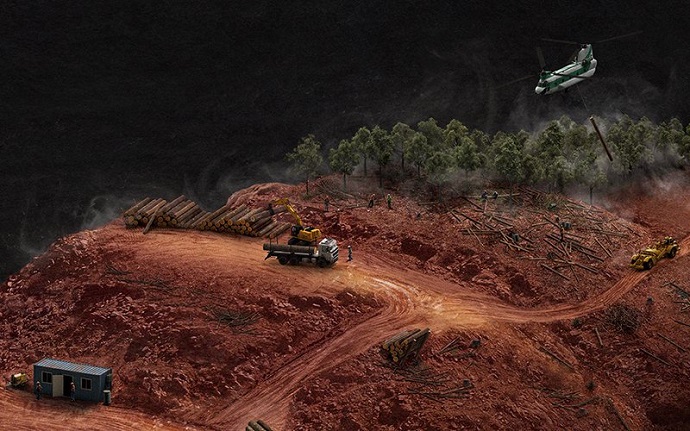
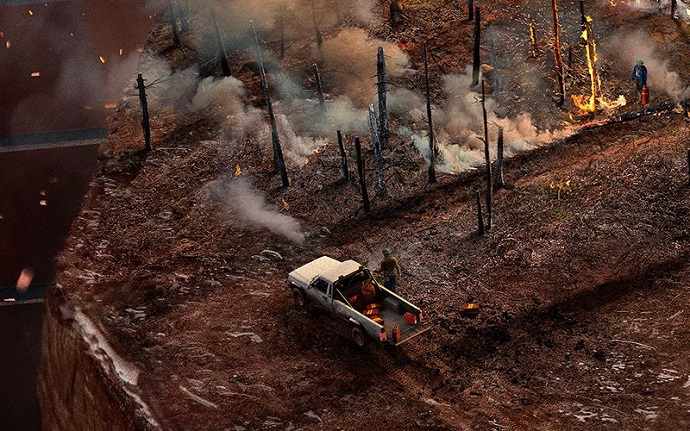
Credits:
Client: ROBIN WOOD
Agency: Serviceplan Campaign X
